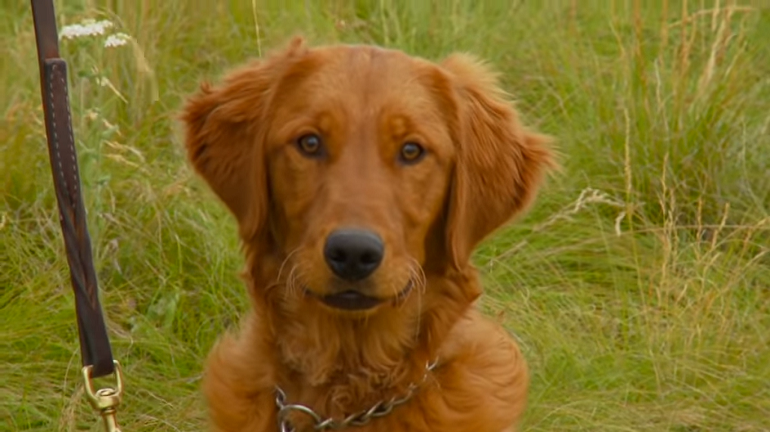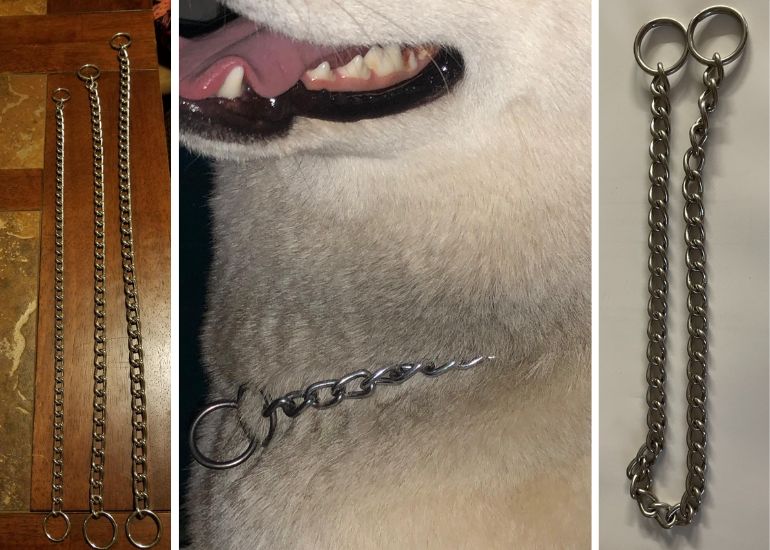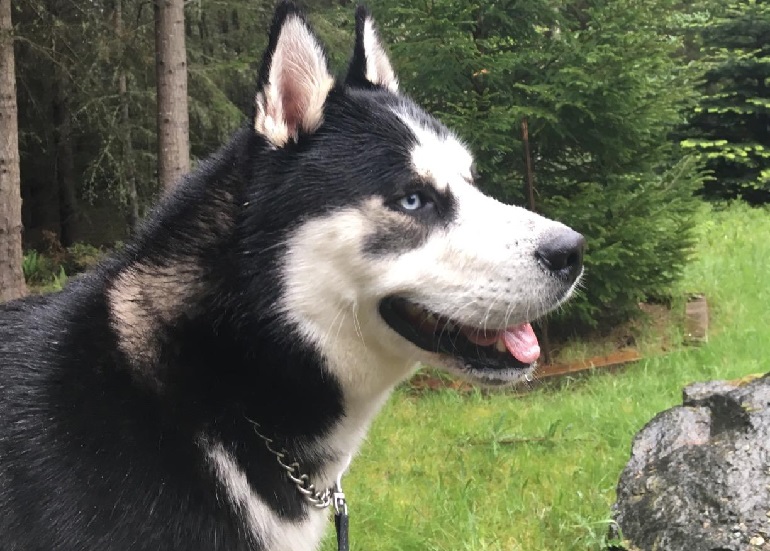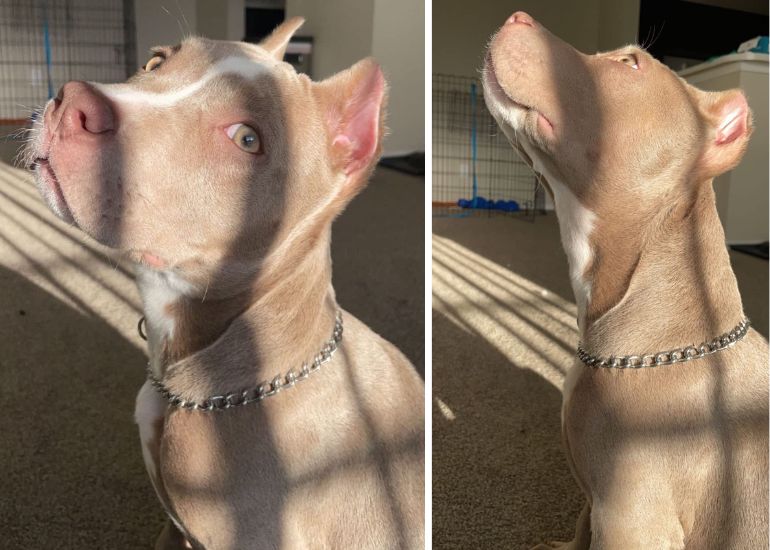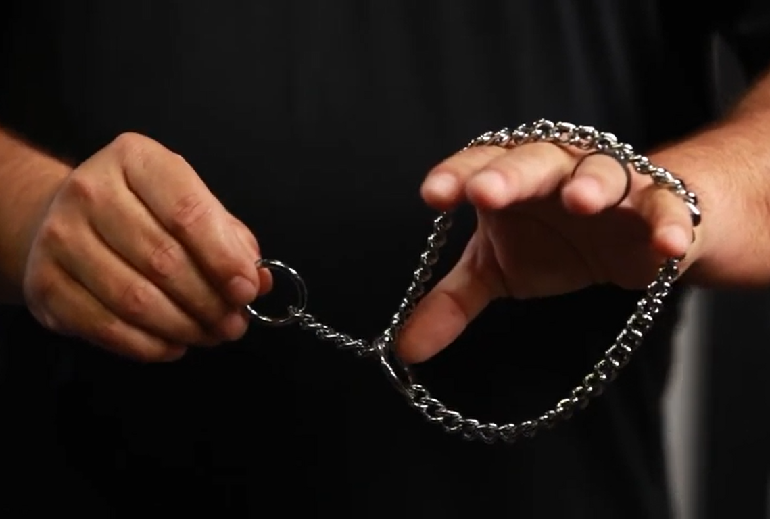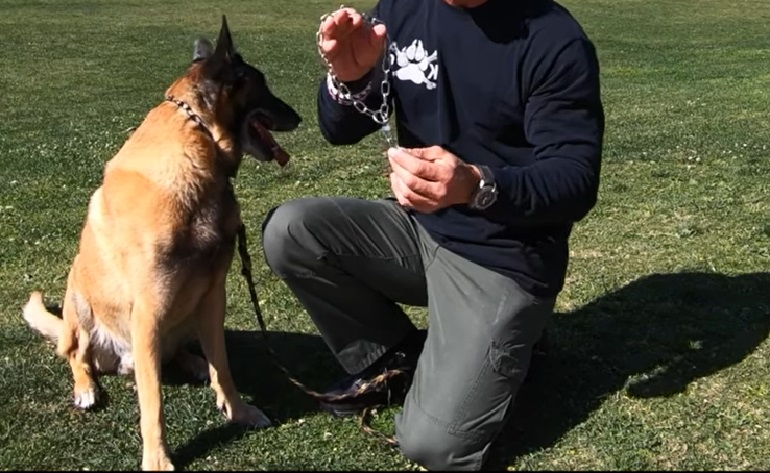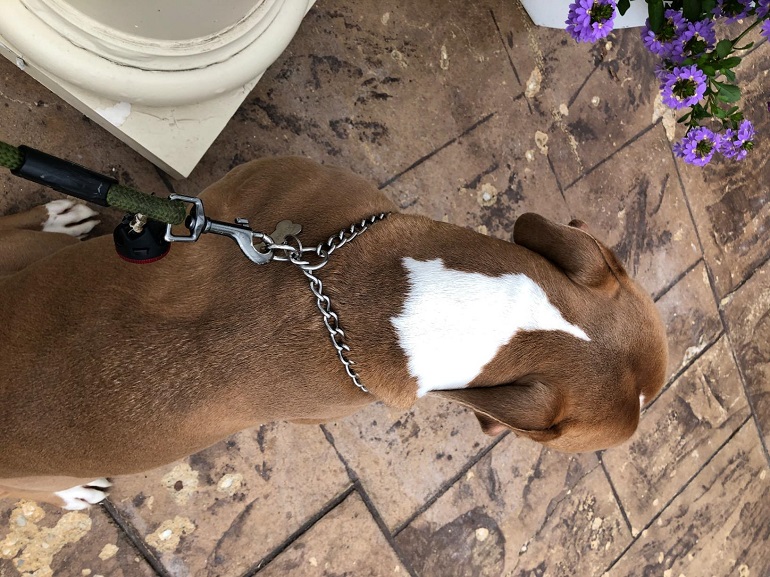Introducing a choke collar to your dog can be an effective training tool when used correctly. This comprehensive guide ensures you understand the nuances of this device—emphasizing safety, technique, and best practices tailored to your dog’s needs. Our step-by-step approach covers everything from selecting the right size to proper placement, ensuring comfort and reducing the risk of harm. Whether you’re a novice or seasoned dog owner, this guide aims to empower you with the knowledge to train your dog calmly and effectively, enhancing your bond and fostering a respectful relationship.
We all love our dogs – they’re furry bundles of joy. But it doesn’t mean they always behave like angels!
You need to train most dogs to get them to behave properly. And one of the easiest ways to simplify the process is to use a training dog collar. This could be anything from a citronella collar to a choke collar.
If your dog exhibits bad behavior while they’re out or is pulling on their leash too much, a choke collar can be used to communicate to them to stop.
But while choke dog collars can be effective training tools, they can be easily misused if dog owners don’t know how to use them properly.
Overview of Choke Collar
From the harsh-sounding name, it’s easy to see why there’s so much controversy. Many people are convinced that choke collars are a cruel and unfair way to discipline dogs.
However, if you’re a professional dog trainer, a choke chain can be the best dog collar to make dogs learn and stop problematic behaviors.
Although it can be dangerous if not used properly, it can be a humane training tool if used correctly. Just remember: a choke chain is for training only – it’s not a regular collar to wear all the time.
Despite the name, you don’t want the dog to choke. Instead, the choke collar tightens to communicate to the dog not to behave in a certain way. It is not a punishment – just a more effective way of communicating.
How do Choke Collars work?
The choke collar isn’t an automatic tool. You need to combine a dog collar and leash to get the full effect. The collar consists of two rings connected by a chain. The chain goes through one ring to form a circle that goes around your pup’s neck.
When the choke chain is on properly, it will tighten when pulling on it and immediately loosen when you let go.
So when the dog misbehaves, you tug the leash to give a gentle correction, and the dog learns to stop. When they do, make sure to give them positive reinforcement. All it takes is a small tug on the leash for your pup to feel pressure and respond.
Why Is It Necessary to Put on a Choke Collar Properly?
Although it’s easy to put a choke collar on wrong, the consequences can be dangerous; your dog could misbehave more or even get injured. Your dog’s neck is a sensitive area – just like a human neck. So, it’s essential to put it on correctly to avoid injuries.
But it’s important to use the collar properly too. Remember: the dog needs to understand that pressure from the collar means that it’s misbehaving.
If you don’t time corrections properly, you can confuse the dog, causing them to misbehave more or even traumatize them.
That’s why it’s important to make sure that the collar loosens immediately when you take the pressure off the leash. If it doesn’t, then it’s not on properly and can be painful to your pup. Alternatively, it can be consistently tight, confusing, and hurting your dog.
Owners who don’t realize they’re hurting or upsetting their dog by using the choke collar in the wrong way, cause much controversy.
To avoid any mishaps, it’s vital to measure for a dog collar for the right fit. If it’s too small, it might cause suffocation by not releasing enough; if it’s too big, it won’t tighten enough and won’t have the desired results.
How to Put a Choke Collar on Your Dog Correctly?
Just like how it’s important to place a prong collar on a dog correctly, it’s just as important (if not more so) to know how to place a choke collar on your dog. There’s only really one correct way – not lots of different methods.
Remember to put it on at the start of a training session and always take it off at the end of a training session. Your pooch shouldn’t be wearing it the entire time.
We’d recommend watching some video tutorials so you can see firsthand the correct way. But here are some useful tips you should follow to get it correct.
1. Thread One End of the Chain Through a Ring
The choke collar consists of two rings linked by a chain. To start, simply drop the chain through one ring to make a circle.
Check there are no twists or turns in the chain and that it can move in and out of the ring easily.
2. Get Your Dog Excited
Don’t try and surprise your dog with the collar. It’s not the best way to start training sessions. They need to be receptive to the collar – ideally, they should even be excited to start training time.
Since choke chains should only really be used when going on a stroll, they should be excited anyway.
3. Show the Dog the Collar
Take it slow and easy if they’re not used to it yet. Let them look at the collar and sniff it – anything they need to do to feel comfortable before you put it on.
4. Make a P Shape
Pull one end of the chain through a ring until you have a P shape, with the circular part big enough to fit over your dog’s head.
5. Face Your Dog from the Front
Assuming you’re going to walk with your dog to your left side, you need to make sure you have your dog sit and face you when you put the collar on. If you put it on from behind, then the collar will be the wrong way around.
6. Put It on Quickly
Do this casually and easily with your pup to make sure they’re not worried about the collar. Stop straight away if they resist, and try again with some of their favorite treats.
7. Check the Collar
The collar should be snug around the neck, but still loose enough to fit a few fingers beneath it – there needs to be room to pull it tight!
Make sure that the chain flows through the rings with ease – you shouldn’t have to pull too hard since this might cause injury.
8. Putting It in the Right Position
Ideally, you should position the collar just below the ears. Avoid putting it right on your dog’s neck because you don’t want their trachea to come under too much pressure.
9. Walk on the Right-hand Side
Finally, if you put the choke collar on in a P shape, walk with your dog to your left.
However, if you prefer walking with your dog to your right side, put on the collar in the opposite way (in the shape of a q).
If you walk on the wrong side, then the chain doesn’t flow through the ring with as much ease, making it harder to release and increasing the chance of injury.
Where Should You Attach a Leash to a Choke Chain-Style Collar?
With just two rings and a chain, a choke collar doesn’t look like regular collars. With normal woven ones, the D-ring is a clear indication of where to attach the lead. But there’s no clear lead attachment on a choke collar.
There are two options when it comes to attaching a leash to a choke dog collar.
The first option is to attach it to the end of the choke chain hanging down past the rest of the collar. Bear in mind that this option is best when the dog has learned most basic obedience commands already.
The second option is to attach it to the ring on the side or top of the dog’s head. If the rings aren’t there and are instead on the front of your dog’s neck or down by their chest, make sure you move them.
Final Thoughts
Used properly, choke collars can be incredibly effective training tools for professional dog trainers and dog owners alike. But because of the range of risks you run by not using it properly, you might want to look into other training dog collars.
For example, a martingale dog collar is a safer alternative. It works in a very similar way, but the design limits how tight the collar gets.
However, if you’re confident about how to correctly use a choke collar and how to put it on your pup, it’s a safe training tool for a quick correction.
Be careful whilst you use it to make sure you don’t frighten or hurt your dog – there’s no excuse for treating your dog poorly.
But if you follow some of these tips and do it the right way, it’s as functional and safe as a leash, vibrating dog collar, or reflective dog collar. And you might just get a well-behaved dog at the end of it.
In conclusion, effectively using a choke collar requires careful attention and responsible handling to ensure your dog’s safety and wellbeing. Following this Complete Guide, you should have a solid understanding of how to properly fit and position the choke collar, ensuring it sits high on your dog’s neck and functions correctly during training sessions. Always prioritize gentle corrections and monitor for any signs of discomfort or distress. Remember, the goal is to encourage positive behaviors while maintaining a nurturing bond with your pet. Always consult with a professional trainer if you are uncertain about the correct usage.

